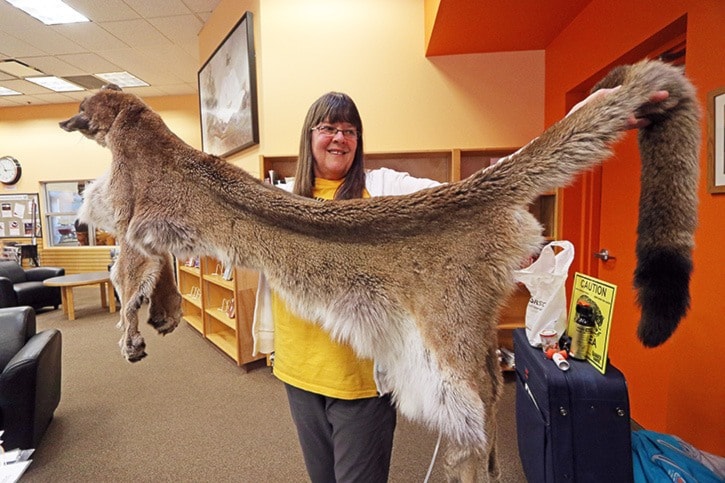Hope Mountain Black Bear Committee chair Lydia Koot presented to a crowd of about ten at the Fraser Valley Regional Library in Hope about wildlife safety on Feb. 3.
Koot spread the message that we live in an area of wildlife. Sightings of bears, cougars and bobcats in Hope should not cause alarm, although everyone should take precautions while doing outdoor activities.
“If I don't like my neighbour, I cannot go to the RCMP and tell them, 'Look, could you please take that neighbour away because I don't like him,' ” said Koot. “Well, that's the same with wildlife. We live in wildlife country, so we cannot just go and shoot any animals that happen to walk to town, or go and build a wall around it.”
She cautioned against alarmism on Facebook, where people want something done about bobcats and cougars. She cites evidence that it has been 20 years since a child got attacked by a cougar.
Sighting cougars in winter is typical because cougars prey on deer. When it starts snowing, deer stop going into the mountains because of impassable snow, hence cougars follow deer into the uninhabited parts of the valley.
“Why do we see them in town? It's an issue that many people don't like to hear,” said Koot.
Humans attract cougars, coyotes and bobcats by feeding birds, triggering a food chain. That action attracts other prey such as squirrels, rats and racoons. Predators come into town and see that these prey are abundant, hence they do not leave. Cat, dogs, chickens and geese are also prey.
Children are not often prey, but that can happen, Koot warned. She advised people to keep their children and pets close to them at all times when going hiking. Dusk and dawn are particularly risky.
To keep children safe, remove shrubbery around home playgrounds and if children take the school bus, request that the local government remove any shrubs. If any wildlife appear in your garden, make noise and throw stones at them to establish territory.
“Don't let wildlife be comfortable in your garden, especially not because you want to take the perfect selfie,” said Koot.
Koot also explained that having bobcats can help with controlling rats and squirrels. They are not dangers to humans, which also explains why the Conservation Officer Service do not prioritize those calls.
However, if people meet with cougars, Koot advised people to stop and make themselves look big by pulling up their jackets, and don't yell at the animal yet. Most cougars should leave.
If the cougar keeps coming closer to you, pulls its ear back and stops hissing, then humans need to start yelling. If it attacks, Koot suggests to fight with a sturdy hiking stick or stones.
“Never ever play dead,” said Koot.
Bringing noisemakers, airhorns or making noise with your voice can keep them away.
She suggests people to bring, and learn how to use, bear spray or bear bangers if going beyond town boundaries.
